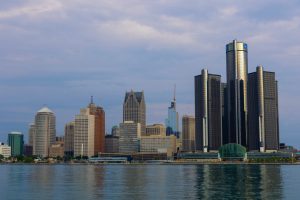Nonqualified deferred compensation (NQDC) plans let employees and executives defer income for retirement or other purposes beyond the yearly limits on deferrable amounts in qualified retirement plans, such as your 401(k). It’s crunch time now for NQDC plan deferrals. Year-end is when most companies require you to choose how much of next year’s pay to put away for the future.
At year-end 2025, you have at least three major planning considerations that affect whether and how much to defer in 2026. Among these factors is the new additional state and local tax (SALT) deduction under One Big Beautiful Bill Act, which has created a novel reason to use NQDC plans. This article explains all three planning issues.
1. The 2026 IRS Contribution Limits For Qualified Retirement Plans
First, the IRS just released the 2026 contribution limits for qualified retirement plans. Knowing those limits, which are adjusted annually for inflation, is crucial to decision-making about nonqualified deferrals for the many employees and executives who are eligible to participate in company NQDC plans.
Generally, you defer income via nonqualified plans only when you know you will max out your yearly contributions to qualified plans, such as your 401(k). If you’ve already maxed out your qualified plan contributions for 2025, you will probably do the same in 2026, so you will need your NQDC plan to defer any more of your salary and bonuses you expect in 2026.
These yearly contribution limits for the well-known qualified retirement plans are a big reason why companies offer nonqualified plans: to let executives and other highly compensated employees save extra money for retirement with an elective nonqualified plan or an excess 401(k) plan. The deferred income is “nonqualified” because it does not fit the tax-code provisions or protections for tax-qualified plans, such as 401(k) and 403(b) plans.
The IRS inflation adjustments from 2025 to 2026 are fairly typical, unlike the prior bigger adjustments made in response to the steep inflation of a few years ago. Below are the key annual contribution limits for qualified retirement plans in 2026, with the 2025 limits in parentheses:
Elective-compensation deferrals, such as 401(k) and 403(b): $24,500 (up from $23,500)
Compensation limit in calculation of qualified deferral amount and match: $360,000 (up from $350,000)
Catchup contribution for people aged 50 or older: $8,000 (up from $7,500)
Total defined contribution plan limit (employee and employer contributions): $72,000 + catchup contribution (up from $70,000 + catchup)
Defined benefit plan payout limit: $290,000 (up from $280,000)
Income threshold defining key employees for top-heavy plans and six-month delay on payout upon separation: $235,000 (up from $230,000)
Income threshold defining highly compensated employees for nondiscrimination testing: $160,000 (no change)
NQDC plans allow you to put away income beyond these permissible contribution amounts of standard qualified retirement plans. As explained on the website myNQDC.com, for retirement planning it can therefore bridge the gap that arises between the amount of income that you will actually need in retirement and the amount of income that can be provided via your 401(k) plans and Social Security.
2. Expectations Of Higher Income In 2026
You may have an extra incentive to defer taxable income if you believe you will be in a higher income-tax bracket in 2026 than you are in 2025. For example, you may have a major vesting of restricted stock units (RSUs) or a cash bonus coming up in 2026.
A carefully calculated income-deferral election for 2026 made before year-end 2025 could keep you out of the next-higher tax bracket or avoid the phaseout of a favorable tax-code provision (for an example, see the next section).
3. The Phaseout Of The New Additional SALT Deduction
A new planning consideration this year is raised by the One Big Beautiful Bill Act (OBBBA) of 2025. A defining feature of the OBBBA is its quadrupling of the limit on the state and local tax (SALT) deduction, from $10,000 to $40,000. This high-profile tax benefit for reducing taxable income is available for those who itemize deductions on their federal tax returns instead of using the standard deduction.
However, the higher cap on the SALT deduction comes with a catch. The OBBBA imposes a phaseout on the new additional SALT deduction based on your income: from $40,000 down to the base $10,000 SALT deduction. For taxpayers with modified adjusted gross income, or MAGI, above $500,000, the additional deduction phases out at 30% of every dollar over that threshold and completely phases out at $600,000 of MAGI.
If your income exceeds that level, you are left with just the underlying $10,000 SALT deduction that is not part of the phaseout. Because the phaseout takes away this potential higher deduction from your taxable income, it increases your true marginal tax rate—how much in taxes you are really paying for each additional dollar of income. While the income-tax rates for most taxpayers with MAGI of over $500,000 are 35% and 37% (the top two brackets), the SALT deduction phaseout can push your actual marginal tax rate to almost 46%.
If you expect your income in 2026 to exceed $500,000, a strategic deferral of income into an NQDC plan can help to keep your income just below that level, thus avoiding the phaseout of your additional SALT deduction.
Details of this tax-planning issue and approaches to consider are explained in another Forbes.com article I wrote earlier this year: Quirk Of One Big Beautiful Bill Makes The Actual Top Tax Rate For High-Income Taxpayers 45.5%.
Nonqualified Deferrals Have Complex Rules
Companies with NQDC plans and NQDC participants alike must follow the complex rules under Section 409A of the US tax code. These rules govern your deferral and distribution elections. They require the salary-deferral election to be made in the year prior to when you would have received it. In addition, the amounts that you defer can only be informally funded by your company, and they are at risk should the company enter bankruptcy proceedings.
The website myNQDC.com is a comprehensive resource on NQDC plans, including the basics, the deferral/distribution process, the risks, and the related financial and tax planning. See also the website’s FAQ for other top NQDC-related issues in year-end planning.
Read the full article here









